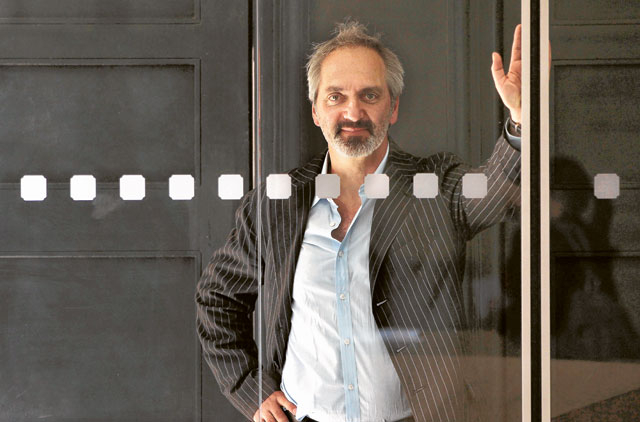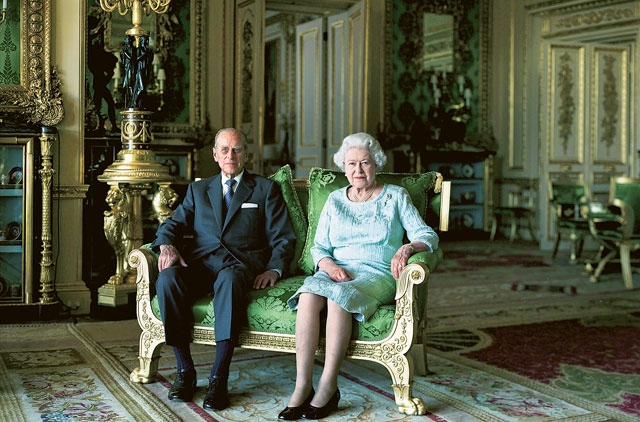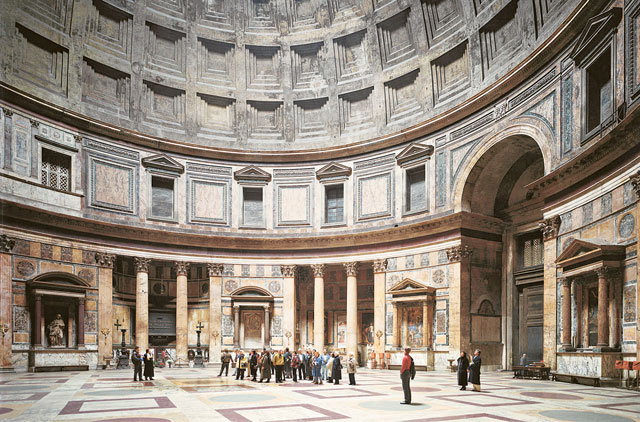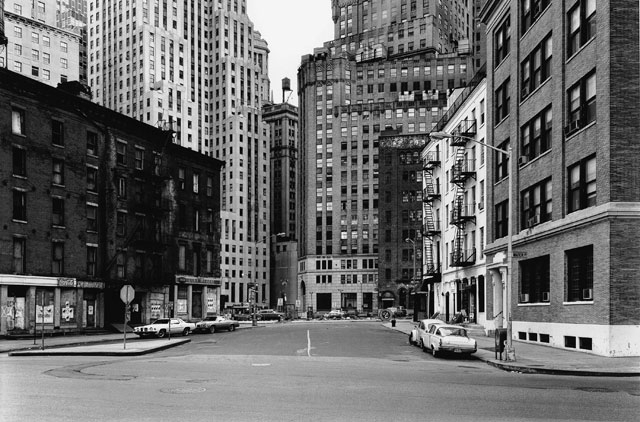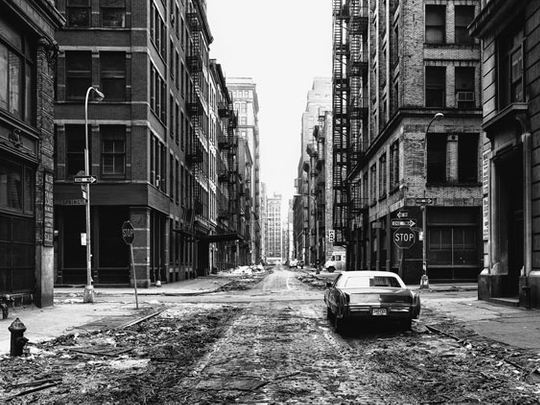
For 15 years, Thomas Struth has been practising the gentle martial art of tai chi chuan. In that time, his photography has moved tentatively inwards to address what he calls "some questions of the self". Only recently, though, did he make a connection between his personal and his artistic journeys.
"I was looking for some stillness in my life, not just as an artist but as a human being in a world where you are washed about by desires, plans and unsatisfied ambitions," he says matter-of-factly. "My question was: How can you not be restless? I can now see that the same question seeped somehow into the work insofar as I was trying to take the restlessness from inside myself and put it into the pictures and on to the walls."
Born in 1954, Struth initially studied painting at the Dusseldorf academy under the German artist Gerhard Richter, before gravitating to photography. His mastery of formal composition, colour and detail have made him one of the pre-eminent European art photographers of our time, and he is best known for his large-scale cityscapes and his ongoing series of family portraits, many of which nod to Renaissance paintings. He has only recently started shooting some work on digital, preferring to use 8x10-millimetre-plate cameras on tripods.
The results of his search to conquer his inner restlessness through art have been intriguing. In the late 1990s he made a series of photographs of jungles. Titled New Pictures from Paradise, they seem the opposite of his signature cityscapes and evince a kind of lush calmness that borders on the Romantic. Like much of his work, they are oddly disorienting in their clarity and detail. "I wanted to make photographs in which everything was so complex and detailed that you could look at them for ever and never see everything," he says. He has since noticed that people spend a lot of time "looking very quietly into the jungle pictures" and that there "is often an even more deeper silence than usual" around them.
More recently, though, Struth has been photographing another kind of jungle: the cluttered interiors of highly technological environments. These large photographs, which have titles such as Tokamak Asdex Upgrade Periphery and Stellarator Wendelstein 7-x, are as complex as his jungles are calming or his earlier street scenes austere. "For me," he says, smiling, "they are landscapes of the modern brain. There is this one-sided investment in technology and science as the promised better future — the iPhone, the internet, cloud computing. It seems to me that there has been a dwindling of political thought and engagement as our thinking has become problematically entangled in these kinds of self-focused, endlessly repeating desires. That is why I wanted these pictures to look somehow exhausting."
In person, Struth is not at all how I expected him to be from years of contemplating — sometimes in bafflement, sometimes in awe — his big, impossibly detailed photographs. He is dressed casually but smartly, in chinos and an open-necked grey-blue shirt, and looks younger than his 57 years. He comes across as both relaxed but careful, though it may just be his concerted efforts to find the right English words to convey his often complex ideas.
At London's Whitechapel Gallery, where a retrospective of Struth's works opened recently, it strikes me that, in his pristine prints of streets, cities, museums, churches and jungles, Struth has set himself the impossible task of trying to capture some sense of the invisible or, at least, the latent. Whether it be restlessness, calm or the strange hinterland between boredom and contemplation that often holds sway in both places of worship and temples of culture, his photographs are always about this looming "other" that hovers just outside the frame.
"There is something in that," he says amiably, as we chat in an upstairs room of the gallery. "But I think, I hope, that the photographs possess a symbolic power that the viewer can connect with. That they have a symbolic power is very important to me, even if it is often a quiet one."
Studying painting as a young man, Struth realised that he was "making big super-realist photographic paintings that just seemed pointless and a bit stupid". Instead, he began photographing his hometown, Dusseldorf, and showed the results to both Richter and the great Bernd Becher, whose own photographs of industrial buildings and towers, taken with his wife, Hilla, the young Struth had never seen. "Richter never liked my paintings but really liked my photographs. Bernd was a little surprised, but polite," says Struth, chuckling now at his youthful naivety. "But I had an anxious time afterwards, thinking, ‘Maybe he thinks I have copied him!'"
Struth's photographs of Dusseldorf's streets and buildings, where the old and the austere meets the modern and the faceless, suggest, he says "a kind of embedded history" of German power and identity that, in the long years of postwar silence, was not acknowledged either by those in power or by ordinary German citizens. "For me, initially, the question was: How do you live with history? Then I began to ask: How is history embedded in the architecture of a city? How does a community represent itself in its architecture, truthfully or otherwise?"
In asking these questions through photography, he found his style and his methodology. "Many people think that the impulse to take a photograph comes from the subject matter," he says, in his quiet but emphatic way. "But, for me, it comes from a wish to talk about certain things that fascinate or bother me, politically or socially. And then I choose the subject that will enable me to address that subject. Otherwise," he says, laughing, but serious, "I would go around aimlessly photographing anything and everything."
To some extent, then, Struth is a political artist, a photographer who believes in the humanity of his vision, even if the end result — his vast cityscapes of China or his early black-and-white photographs of a seemingly depopulated New York — sometimes tends towards the opposite: a vision of a world where humanity has been neutered or erased.
The exceptions are his museum series and his family portraits. For the former, taken over two prolonged periods in the early and the late 1990s, he spent long days observing people looking — or not looking — at the pictures on the walls of major European galleries such as the Prado and the Louvre. "The gallery is a kind of unclear, in-between space for many people," he says. "It's not defined like a football stadium or a concert venue. I wanted to capture that interim sense of place." He stopped taking his gallery pictures when one too many people came up to him and asked if he was Thomas Struth. "I knew then it really was time to move on."
In his family portraits, painterly composition and tonal colour combine in a way that suggests those years studying with Richter were not in vain. (In one, he captures the Richter family looking like they have been transposed from a court in medieval Florence to a modernist living room in Cologne.)
"Interestingly," Struth says, "the family portraits have lately become recognised as not-so-old-fashioned. I sense that they are being looked at, and perhaps understood, differently by critics. The public have always been drawn to them because they see a reflection of themselves, their own families. They sense, I think, that these are just condensed slices of an epic drama arrested in a certain moment."
Last month, the Scottish National Gallery in Edinburgh unveiled Struth's diamond jubilee portrait of the Queen and Prince Philip. Commissioned by the National Portrait Gallery in London, it fits quite neatly into Struth's family series insofar as it captures a similar, but perhaps more heightened, kind of relaxed formality. The Queen looks almost at ease while the Duke looks intently, almost defiantly, into Struth's lens.
"It was an odd experience," the photographer says. "They were extremely dry and, you could say, unfriendly at the start. But they were intrigued by the set-up: the big, old-fashioned plate camera on a tripod. I told them about the problems I had with it at airport security and the Queen nodded and said that maybe they should make an exception for photographers and their equipment, which was surprising. Mainly, I think they were grateful that I did not take too long."
How, though, did he prepare for the shoot and avoid the pitfalls of so many royal portraits: the over-elaborate settings, the empty gaze, the clichéd compositions? "I think the Green Room worked as a setting that did not overpower the subject, and I liked that they were together but slightly apart. My approach was to say: Here is the Queen and her husband, but here, also, is an elderly couple of the same generation as my own parents. What I am happy about most of all is that they are both very alert and so present in the room at this second, that they are not thinking of anything else at that moment the picture is taken." That quiet alertness is, you sense, what Struth is after in all his pictures; an echo of his own presence as a photographer and a person.
Thomas Struth: Photographs 1978-2010 is on at the Whitechapel Gallery, London, until September 16.


